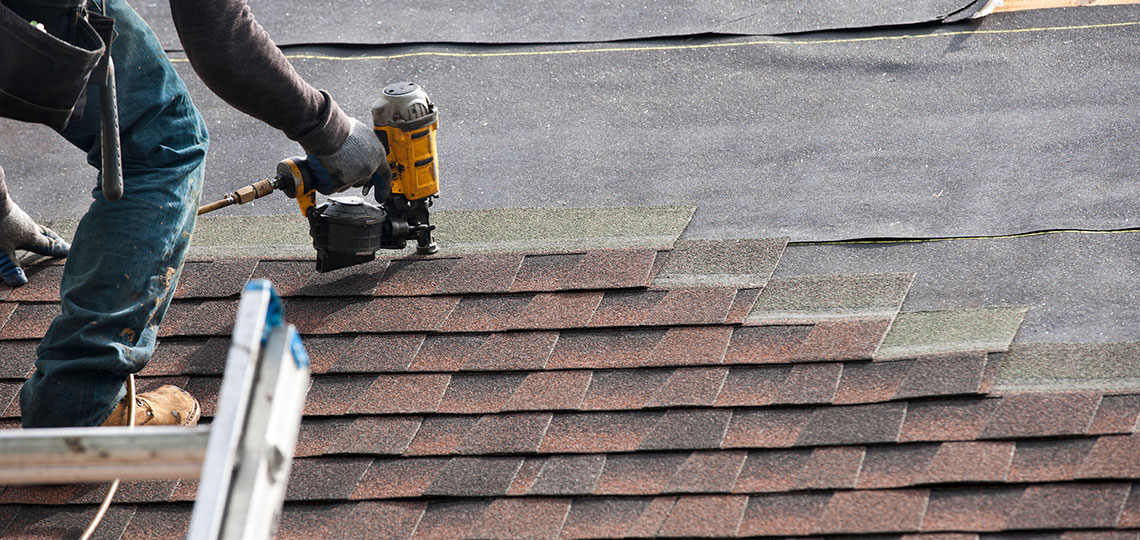Important Inquiries to Ask Gainesville Roofing Companies Prior To Employing
Important Inquiries to Ask Gainesville Roofing Companies Prior To Employing
Blog Article
Best Practices for Ensuring Appropriate Roof Covering Air Flow
Making certain proper roofing ventilation is critical for the longevity and efficiency of a roof covering system. A well balanced intake and exhaust vent proportion, typically 1:300, plays a pivotal function, with consumption vents ideally placed at the reduced edge of the roof covering for amazing air entry and exhaust vents at the height for cozy air exit. Routine assessments to recognize blockages and maintain clear air flow are vital. Maintaining insulation away from vents is vital to prevent air flow restriction. Comprehending these foundational components sets the stage for more comprehensive insights into installation and maintenance practices that can significantly improve your roof's performance.
Understand Air Flow Basics
Correctly recognizing air flow basics is important for ensuring the long life and efficiency of roof systems. Efficient ventilation mitigates dampness accumulation and temperature level extremes in the attic room, both of which can cause substantial structural damage gradually. A well-ventilated roofing aids in avoiding usual concerns such as mold development, wood rot, and ice dams, which can jeopardize the integrity of the roof covering materials and the underlying frameworks.
The main goal of ventilation is to assist in the motion of air, permitting a regular exchange between the exterior and interior atmospheres. This equilibrium is achieved via a mix of consumption and exhaust vents that interact to keep optimum airflow. Consumption vents, generally located along the eaves or soffits, enable fresh air to enter the attic room space, while exhaust vents, usually positioned at or near the roofing system ridge, allow hot, moist air to run away.
Key aspects affecting the performance of roofing system ventilation include proper positioning, ample sizing, and making sure that both consumption and exhaust vents are unblocked. Regular examination and maintenance are essential to recognize possible blockages, damages, or inadequacies in the ventilation system, consequently protecting the roofing system's efficiency and sturdiness.
Sorts Of Roofing System Vents
Roofing system vents play an essential duty in maintaining effective attic room ventilation and, by expansion, the overall health of the roof covering system. Numerous sorts of roof vents are available, each with special advantages customized to details roof covering demands. Ridge vents, for instance, are mounted along the roofing's height, allowing warm, humid air to escape from the attic room. They provide constant ventilation and mix seamlessly with the roofline, making them both efficient and cosmetically pleasing.

Soffit vents are set up under the eaves and operate in tandem with roof covering vents to make sure a well balanced intake and exhaust system. By allowing cooler air to enter from below, soffit vents promote the expulsion of warm air with top vents. Gable vents, located on the exterior wall surfaces of the attic, deal an additional reliable service, especially in homes with gable roof coverings.
Analyze Your Existing Ventilation

Following, consider the age and condition of your roof covering materials and ventilation parts. Older systems may not adhere to current building regulations or might have weakened over time, reducing their effectiveness. Conduct a detailed assessment to recognize any type of signs of wear and tear, such as rust, damages, or voids that could compromise the system's performance.
Additionally, gauge the attic room temperature level and moisture degrees. Heats and humidity can suggest inadequate ventilation - roofing companies gainesville florida. Use a hygrometer and thermometer to get exact analyses, contrasting them with outdoor conditions. Consistent discrepancies suggest prospective concerns that need resolving.
Installation Best Practices
Effective installment of roofing air flow systems is paramount for making sure optimum performance and long life. Appropriate installation begins with understanding the certain ventilation needs of the building and the roofing it covers. This involves calculating the right ratio of intake to tire vents, commonly sticking to the 1:300 policy, which states one square foot of ventilation for every 300 square feet of attic room flooring space.

Consumption vents need to be set up at the roofing system's lower edge, often in the soffits, to enable awesome air to enter. Exhaust vents, on the various other hand, need to be set up near or at the roofing system's peak to promote the exit of warm, wet air.
Seal all vent links diligently to avoid air leaks and possible water infiltration. Use top quality products and follow maker standards to guarantee sturdiness and efficiency. Additionally, incorporating ridge vents with baffles can substantially enhance airflow efficiency by preventing wind-driven rain and snow from entering the attic room.
Ultimately, specific setup of roofing ventilation systems mitigates possible problems such as mold and mildew growth, ice dams, and architectural damages, guaranteeing the roofing system's integrity and the building's overall wellness.
Regular Upkeep Tips
Uniformity in upkeep methods is essential to ensuring the long-term performance of roof air flow systems. Throughout these evaluations, guarantee that vents are cost-free of particles, nests, and other blockages that can restrain airflow.
Make use of a soft brush or a vacuum to remove dust and particles from intake and exhaust vents. Be mindful not to harm the air vent screens or louvers during the procedure.
Proper insulation is similarly essential. Make certain that attic insulation does not obstruct the vents, as this can severely restrict air flow. Rearrange or change it to maintain an effective Discover More Here obstacle. if any insulation has actually moved or resolved.
Lastly, replace any type of harmed or missing out next page on parts quickly. Broken vents, broken tiles, or tatty blinking can all contribute to insufficient air flow and must be attended to immediately. Routine upkeep makes sure that the roof ventilation system works efficiently, thus extending the life-span of the roof covering itself.
Final Thought
Making certain correct roof air flow is extremely important for keeping the efficiency and resilience of a roof system. Adherence to the 1:300 intake and exhaust air vent ratio, coupled with the strategic positioning of vents, is necessary.
A well balanced consumption and exhaust vent proportion, commonly 1:300, plays a critical duty, with consumption vents ideally put at the reduced side of the roof for awesome air access and exhaust vents at the optimal for cozy air departure. Intake vents, usually situated along the soffits or eaves, allow fresh air to go into the attic room space, while exhaust top article vents, usually situated at or near the roof covering ridge, make it possible for hot, damp air to leave.
Soffit vents are set up under the eaves and work in tandem with roof vents to make sure a well balanced intake and exhaust system. By allowing cooler air to go into from below, soffit vents assist in the expulsion of hot air via top vents. Adherence to the 1:300 intake and exhaust vent ratio, paired with the strategic placement of vents, is vital.
Report this page